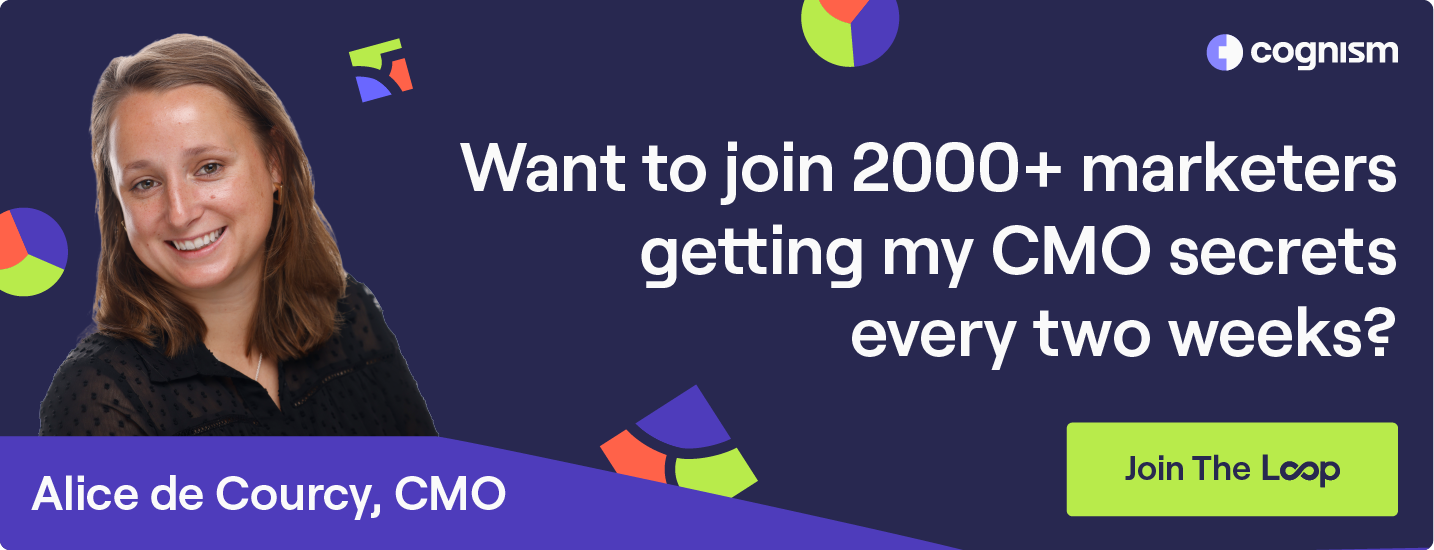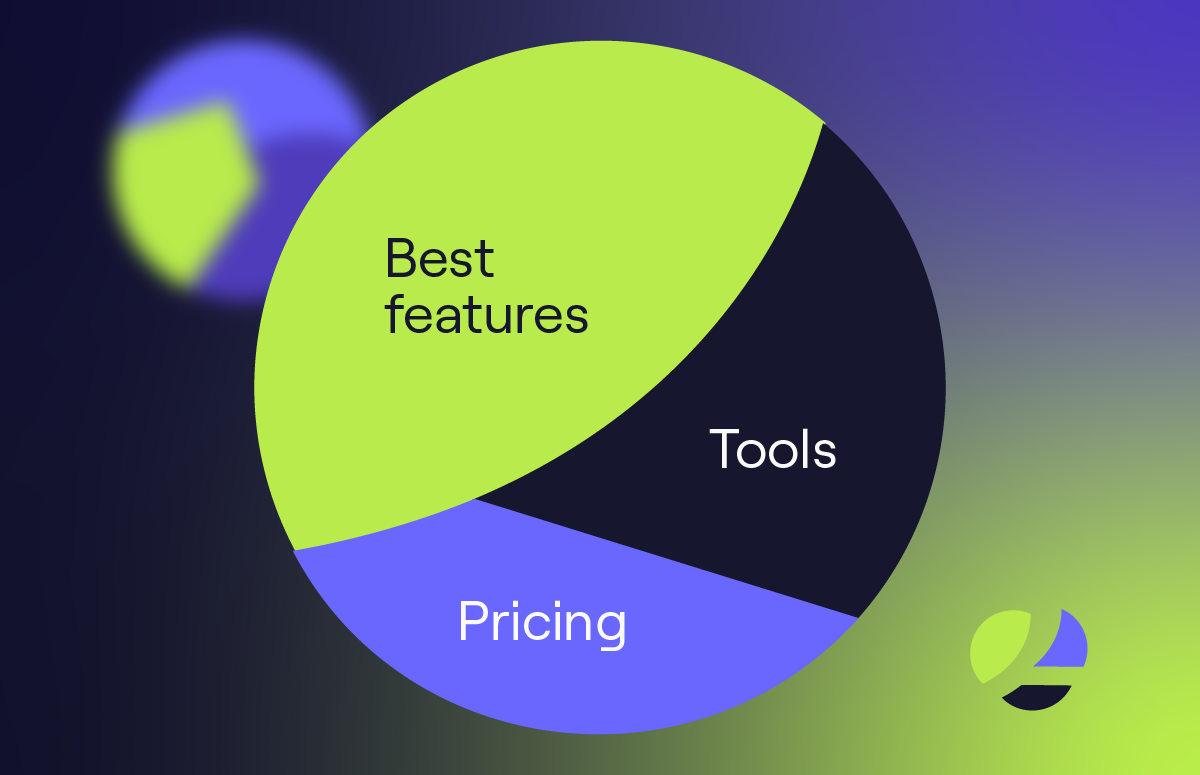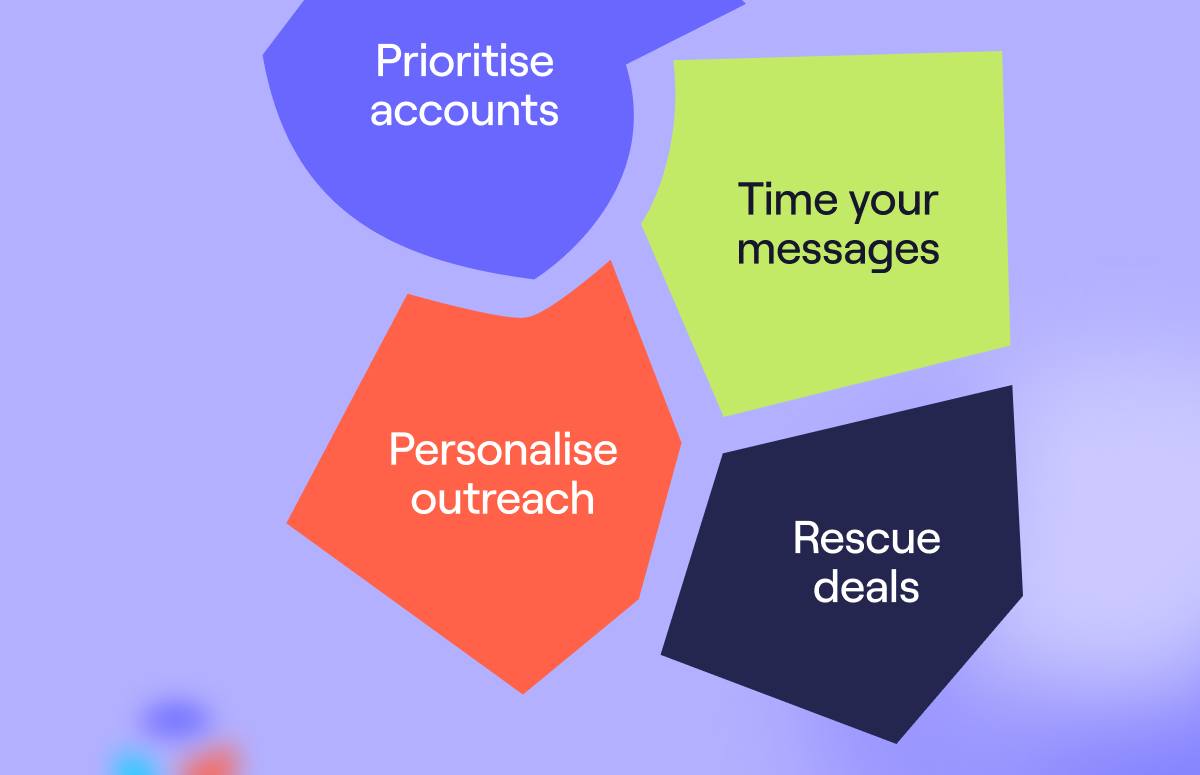7 Ways to Grow Your Email Marketing Database
How many marketing channels come close to offering $42 for every dollar spent?
Apart from email marketing, not many.
Unsurprisingly, regardless of whether it’s offline events or online e-commerce, businesses like yours want to leverage email marketing for more revenue and profits.
One of the more significant factors behind the success of an email campaign is the quality and size of its email marketing database.
Given that an email address in an email database is worth $37 on average, is there anything you can do to maintain and grow a healthy email marketing database that gives you better results?
The answer is a resounding yes!
In this blog post, we’ll walk you through everything you need to know about email marketing databases, including the types of information they hold and the best practices to grow them profitably.
Email marketing database: a definition
Email marketing database vs. email list — you may have used these terms interchangeably, but there’s a slight distinction.
An email list is a collection of email addresses collected from opted-in email subscribers who would like to receive communication from your business. At its simplest, it refers to the prospects’ names and their email addresses.
On the other hand, an email marketing database contains all information received from prospects, including contact info, demographic data, preferences, past purchase or browsing history, and more.
What types of information does an email database hold?
Regardless of the exact email marketing platform you use, here are the most popular types of information stored in their email databases:
- Demographic information: Age, gender, location.
- Contact information: Email addresses, subscribers’ names, direct dials, mailing addresses.
- Behavioural data: Web page or store landing page interactions (e.g., pages visited, products viewed), historical campaign responses (e.g., clicks, conversions), engagement history (e.g., email opens, clicks, unsubscribes).
- Segmentation data: Tags or labels for segmenting subscribers based on specific criteria (e.g., interests, customer type, opt-in sources).
- Preferences and interests: Subscriber preferences (e.g., preferences for the type of content, frequency of communications, product, etc.).
- Purchase behaviour: Past purchase records, order details, and transaction history.
- Opt-out information: Records of unsubscribed or opted-out subscribers, reasons for opting out, if provided, and more.
Here’s an infographic explaining the different types of data fields you can use to segment your email list and personalise your messages.
Image Source: Sender
When the info you collect from your prospects is basic, your email marketing database will look like an email list.
On the other hand, once you start collecting more specific and diverse customer data, your database will become a full-fledged Customer Relationship Management (CRM) platform.
Why are email databases important?
Not only do email marketing databases act as centralised data banks containing subscriber info, but they also provide your business with all the pieces of data you need to plan your marketing strategies.
Specifically, an email marketing database can benefit your business in the following ways:
- Improves email campaign management efficiency.
- Allows businesses to leverage subscriber behaviour and buying information for increased sales and revenue.
- Higher engagement and conversion rates through personalised content.
- Enables laser targeting of specific customer groups using segmentation.
- Supports sending of relevant content based on subscribers’ preferences.
- Boosts campaign performance and overall return on investment (ROI).
- Keeps both businesses and email service providers safe by complying with data regulations such as the GDPR.
- Presents opportunities for data-driven insights and optimisation of campaigns.
Email databases allow you to send personalised messages over targeted campaigns, resulting in more sales, increased profits, and better overall growth. This is why 37% of brands are increasing their email budgets, while just 1.3% are making cuts.
Next, let’s look at some leading practices to help grow better email databases faster.
7 best practices for building and managing email lists
When it comes to email marketing databases, quality trumps quantity. The quality of your email subscribers, multiplied by their eagerness to hear from you, always defines the best outcomes for your email campaigns.
Here are some of the ways to start building a loyal following of subscribers who’ll open your emails, click on your links and buy what you sell:
1. Implement permission-based opt-in
Adopt a consent-based strategy for your opt-ins. Here, prospects willingly provide their email addresses and explicitly agree to receive your marketing emails.
Here are 3 tips for high-quality signups:
- Use an opt-in checkbox: Ensure your opt-in forms and pop-ups have an opt-in checkbox left unchecked by default. Your website visitors or prospects on your traffic landing pages must intentionally enable the checkbox to receive your emails.
- Display your privacy policy: Including a link to your privacy policy and terms of service enables your business to come across as honest and transparent to your target audience, as you’re not afraid to show them how you’ll handle their data.
- Always double opt-in: Set up a double opt-in form where subscribers receive an email with a link to confirm their email subscription after signing up. This is also a good email list hygiene practice as it helps ensure that fake, fraudulently submitted, and mistyped email addresses do not make the cut.
Look at how email copywriter Ben Settle captures his leads through a permission-based opt-in form embedded on his website:
Image Source: Ben Settle
In short, collect email addresses with the full permission of each subscriber, and you will avoid getting disinterested, half-hearted, or even misinformed subscribers in your email contact database.
2. Communicate a clear value proposition
If there’s one thing you must do to attract and retain email subscribers by the droves, it’s to communicate what you offer and how that could benefit them. This will encourage them to sign up, increasing the odds of them staying opted in and engaged in the longer run.
Here are 3 tips for communicating your value to your audience:
- Communicate immediate and long-term benefits: While you must bring to focus the long-term benefits of engaging with your business, highlighting the immediate benefits, such as free content or early access to resources, could increase your signup conversion rate.
- Personalise and make relevant: Let your landing page visitors know how your email newsletter can meet their specific expectations and help them with their goals. Remember to follow the best practices for designing a newsletter.
- Make it exclusive: The desire for exclusivity is hard to beat. Therefore, create a sense of privilege and value when offering something only to those who sign up for your emails, such as exclusive discounts or insider info.
Lastly, set the right expectations for your target audience so that you always attract the right customers and avoid those you’re unable to help.
3. Optimise your sign-up forms for high-conversions
The primary purpose of creating sign-up forms is to capture leads, but not all of them do it equally well.
Why? Because conversion rates can vary significantly depending on the number of fields, the information being asked for, visual appeal, placement, and copy.
3 essential tips to help you design high-converting sign-up forms:
- Keep it lean: A well-designed form with minimal fields, clean design, and an enticing call-to-action can boost conversions.
- Optimise for mobile: With almost 60% of traffic coming from mobile devices, you must optimise your signup forms to be responsive on screens of all sizes. Doing so will provide a seamless experience for mobile visitors, increasing conversion rates.
- Display social proof elements: Social proof (testimonials, reviews, a social media post endorsing your business, celebrity endorsements, and more) builds trust and boosts conversions. It assures your reader that others have found value in subscribing to your email list.
Check out the example below of an optimised popup form from Sender collecting interested prospects’ names and email addresses.
Image Source: Sender
Whether a pop-up on your blog or opt-in forms on your partner website, your sign-up forms are more than just lead generation mechanisms. They filter in high-quality leads to your email funnel, so go above and beyond in optimising them to the hilt.
4. Segment and personalise
It’s crucial to segment your subscribers into smaller, more focused groups based on their behaviour, interests, demographics, and more.
That way, instead of sharing the same content with the entire list, you’ll send tailored and personalised content that resonates with them.
Let’s say you run an online clothing store. Using an email lead generation tool, you can segment your signups based on gender and send custom emails showcasing relevant products and offers for each group.
This targeted approach increases conversions because all prospects now receive content that seems exclusive to them and their customer journey.
3 tips for segmenting your subscribers effectively:
- Collect relevant data: Collect data from subscribers using custom fields inside opt-in forms. This may include demographic data or interests. It doesn’t need to happen during signup; you can also send popup surveys and feedback emails. The more relevant the data, the better conversion rates you’ll get.
- Use behavioural triggers: Track user actions and behaviour, including website visits, email opens, link clicks, and more, to create behavioural segments. This allows you to target these specific segments with tailored product recommendations or follow-up emails.
- Regularly update your segments: Monitor results, find new segment opportunities, or shunt out older non-performing segments if necessary. Just understand that this is a continuous process.
See below an example of a segmented email that offers its women subscriber base an exclusive offer on account of International Women’s Day:
Image Source: Serrano
In short, with segmentation, you can personalise every purchase journey to add value to their experience, leading to better business outcomes in the long run.
5. Deliver valuable and relevant content
One of the best things you can do for the health of your email marketing database is to ensure a steady stream of rare-to-find, educative and entertaining content that aligns with their needs and keeps them interested.
3 insightful tips for delivering high-quality content to your subscribers:
- Know your audience: You must understand your target audience’s interests, pain points, interests, frustrations, motivations, and dreams better than themselves. This will speed up the content creation process and allow you to create value in their lives.
- Provide actionable information: Keep your emails short and include tangible action-oriented info that your readers can apply the very next minute. Examples include tips, step-by-step guides, etc.
- Engage and entertain: If there’s one thing you must do, it’s to keep your emails interesting to read at all times. Once you start making your emails enjoyable to read, it will keep your subscribers highly engaged and your list in good health.
Look at the email below from Yelp that offers homeowners tips for house maintenance.
Image Source: Yelp
What’s more, if you consistently offer great content, your most loyal subscribers will go the extra mile and provide you word of mouth referrals or shoutouts on social media channels.
6. Maintain email database hygiene
List hygiene refers to the process of managing the quality and effectiveness of your email list. Each activity associated with list hygiene has only one goal: to ensure that contact records are accurate, relevant, and engaged.
3 tips to maximise the hygiene of your email marketing database:
- Regularly remove inactive subscribers: Since inactive readers can adversely impact your email deliverability for even interested users, periodically clearing your email database might be a good idea. Round up and remove or run win-back campaigns on inactive email subscribers who’ve not engaged with your emails over a specific period.
- Implement double opt-in: Using double opt-in ensures that only highly interested subscribers make it to your list since they have to confirm the subscription in their inbox.
- Verify email addresses: Use email verification services to validate the email addresses in your email marketing database. This can help remove invalid or hard-bounce email addresses that could otherwise impact your deliverability.
Look at the great example of a double opt-in confirmation email from Wix. It’s sent out to new sign-ups and asks the reader to click a button to confirm that this is their email address.
Image Source: Wix
Email list hygiene goes beyond getting higher conversions for your email campaigns. It also boosts your email inbox deliverability, impacting the overall return you get for your email marketing efforts.
7. Monitor and analyse metrics
By tracking and analysing key metrics, you gain valuable insights into your email campaign performance, subscriber engagement, and overall email marketing strategy.
Image Source: Sender
Let’s look at an example to understand the impact of email campaigns on email database health.
Let’s say you send an email campaign to your entire email list without segmenting or targeting your audience. Many recipients unsubscribe or mark the email as spam because it contains irrelevant or irrelevant content that doesn’t align with their interests or preferences.
This may negatively impact your email list health by increasing unsubscribes, decreasing engagement, and increasing spam complaints.
3 tips to help you monitor and analyse email metrics right:
- Pre-establish Key Performance Indicators (KPIs): Determine which marketing metrics you’ll monitor and record. Indirect metrics that impact email database health include open rates and click-through rates, while direct metrics include subscriber engagement data, unsubscribe rates, and spam complaints, among others.
- Regularly review and benchmark: Review and analyse your email metrics to see where your email campaigns are headed. Compare your data against past historical performance figures or industry benchmarks to gain the proper context and accurate insights.
- Test and Optimise: Use A/B testing to optimise your email campaigns, one variable at a time. Test different variables, including subject lines, content formats, and CTAs, and even send times to identify what works and what doesn’t. Incorporate insights gathered into your marketing strategy to iterate.
A data-driven approach can help you make informed decisions that improve engagement and generate extra revenue while maintaining your email marketing database in prime health.
What is the best email marketing database?
We’ve given you some top tips for building a robust email marketing database.
But did you know there’s a quicker, easier way?
Cognism is the world’s leading email database provider, favoured by 3k revenue teams and counting. Whether you want to break into new markets, attract higher-end clientele, or expand your targeting, Cognism offers a powerful solution.
See how the tool works - take an interactive tour 👇
With Cognism, you can:
- Generate lists containing top-quality account and contact data (including precise business emails).
- Keep your information up-to-date as your prospects change locations or job positions.
- Rectify inaccuracies, fill in gaps, and transform unusable data into actionable business insights.
Don’t take our word for it - see how Tharsus increased its email open rates from 2-6% to 60% after signing up with Cognism.
Elaine Fullarton, Marketing Principal at Tharsus, said:
“Cognism is constantly working hard in the background to ensure its data is top-notch quality. Working with a database that has a pool of verified emails makes my job as a marketer easier. If my bounce rate increased, that would be a huge problem because I’m not reaching my audience and our investment in the tool would be questioned.”
“I don’t know another lead source where I’m 100% respecting GDPR guidelines and accessing verified email addresses simultaneously. People often ask how we found their email address and I confidently say that it came from Cognism’s leading compliant B2B database.”
Email marketing database: key takeaways
Successful email marketing campaigns are built upon a robust, thriving, and engaged customer and prospect base. Taking care of your email marketing database and growing it in a healthy way will solve most of your email marketing ROI problems.
A few key takeaways:
- An email marketing database is a valuable asset that allows businesses to collect, organise and maintain relevant prospect and customer information.
- It’s more important to have a quality email list than a large one.
- In the future, there will likely be a stronger focus on privacy and data protection laws in email marketing databases.
With the right approach to nurturing and growing your email database, your business will benefit from stronger relationships, customer loyalty, and exceptional business outcomes.



